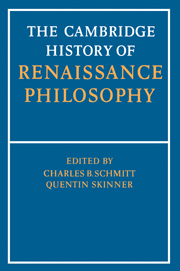22 - Appendices: The availability of ancient works
from PART 3 - SUPPLEMENTARY MATERIAL
Published online by Cambridge University Press: 28 March 2008
Summary
INTRODUCTION
How did you study the Presocratics in the Renaissance? This simple question has no simple answer. In 1567 Élie Vinet did so by commenting on a late Latin text, itself adapted from Greek sources: the De die natali of Censorinus. In less than a decade Henri Estienne and Joseph Scaliger did so in a far more original and systematic way, by collecting and analysing fragments quoted by Clement of Alexandria, Simplicius and Sextus Empiricus. Ten years after that Isaac Casaubon could go even further, not just assembling testimonia and fragments but setting them into a new historical context. In 1584 Scaliger found himself baffled by Diogenes Laertius' statement that Thales had written ‘only two works, On the Solstice and On the Equinox, since he considered other matters capable of being apprehended (καταληπτα) (1.23). ‘This’, Scaliger admitted with unusual humility, ‘I do not understand.’ But in the same year Casaubon overcame the difficulty with ease. Set the text into its period, he suggested; consider the ‘uncultured and primitive’ period in which Thales wrote. Surely one should amend the text, economically, by adding an alpha-privative to καταληπτα. Thales had considered phenomena other than solstices and equinoxes ακαταληπτα – ‘incapable of being apprehended’. This was a natural attitude, after all, given his position at the very beginnings of Greek thought.
This little story illustrates some of the large problems posed by any discussion of availability of ancient philosophical sources in the Renaissance. It reveals rapid progress in the accumulation of texts, increasing sophistication in their interpretation and the development of a more and more historical perspective towards them on the part of their modern interpreters.
Information
- Type
- Chapter
- Information
- The Cambridge History of Renaissance Philosophy , pp. 763 - 791Publisher: Cambridge University PressPrint publication year: 1988
References
Accessibility standard: Unknown
Why this information is here
This section outlines the accessibility features of this content - including support for screen readers, full keyboard navigation and high-contrast display options. This may not be relevant for you.Accessibility Information
- 10
- Cited by
